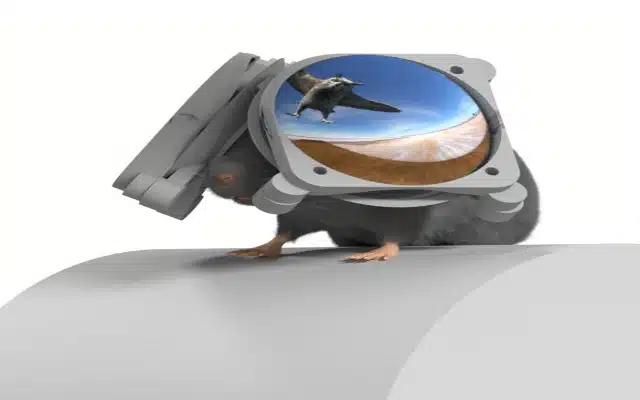New York : Researchers in the US have created new virtual reality (VR) goggles specifically for mice at Northwestern University. Not only are these tiny goggles adorable, but they also give mice housed in lab environments a more immersive experience.
Researchers can more precisely and accurately study the neural circuitry underlying behavior by simulating natural environments more faithfully.
Additionally, the VR goggles may provide new light on how the human brain adjusts to and responds to repeated VR exposure, a subject that is currently poorly understood.
Neuron, a journal, published the research findings. This is the first time a virtual reality system has been used by researchers to model an overhead threat.
“So far, labs have been using big computer or projection screens to surround an animal. For humans, this is like watching a TV in your living room. You still see your couch and your walls. There are cues around you, telling you that you aren’t inside the scene. Now think about putting on VR goggles, like Oculus Rift, that take up your full vision,” said Northwestern’s Daniel Dombeck, the study’s senior author. “
By keeping the mouse in place on the treadmill, neurobiologists can use tools to view and map the brain as the mouse traverses a virtual space.
“VR basically reproduces real environments,” Dombeck said.
The group produced small goggles by using tiny organic light-emitting diode (OLED) displays and specially made lenses.
The device, known as Miniature Rodent Stereo Illumination VR (iMRSIV), consists of two screens and two lenses, one for each side of the head, which individually illuminate each eye to provide three-dimensional vision.
This gives each eye a 180-degree field of vision, completely submerging the mouse and blocking out its surroundings.
Dombeck and his colleagues mapped the brains of the mice and discovered that the activation patterns of the brains in goggle-wearing mice were strikingly similar to those of animals in free movement.
In side-by-side comparisons, the researchers noticed that goggle-wearing mice engaged with the scene much more quickly than mice with traditional VR systems.
“In the future, we’d like to look at situations where the mouse isn’t prey but is the predator,” Issa said. “We could watch brain activity while it chases a fly, for example. That activity involves a lot of depth perception and estimating distances. Those are things that we can start to capture.”
Because the goggles are relatively inexpensive and require less intensive laboratory setups, Dombeck said they could make neurobiology research more accessible.
Read More
India’s Top 20 AI Startups Join Google Accelerator Program

















